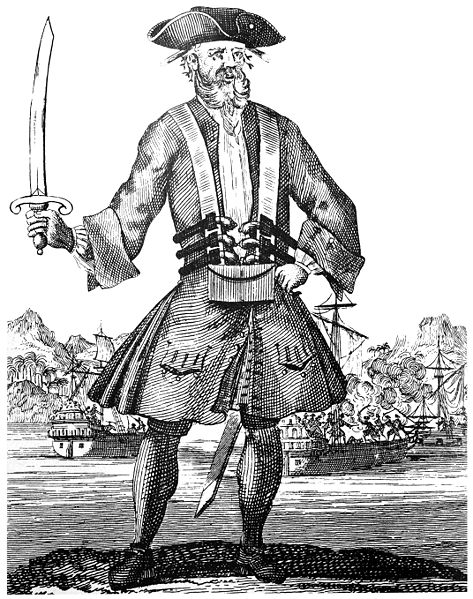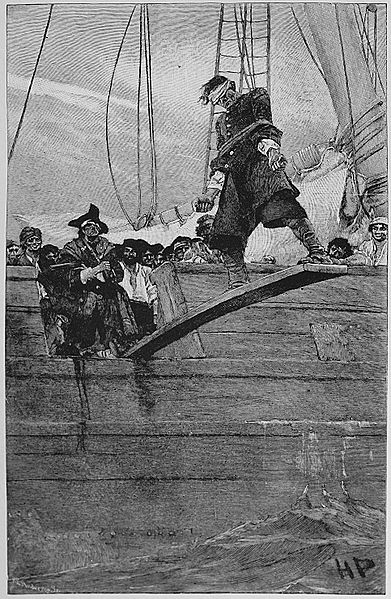Walking the plank was a method of execution practiced on special occasion by pirates, mutineers, and other rogue seafarers. For the amusement of the perpetrators and the psychological torture of the victims, captives were bound so they could not swim or tread water and forced to walk off a wooden plank or beam extended over the side of a ship.
Artist's conception of walking the plank (illustration by Howard Pyle for Harper's Magazine, 1887)
Pirates in the arts and popular culture
In English-speaking popular culture, the modern pirate stereotype owes its attributes mostly to the imagined tradition of the 18th-century Caribbean pirate sailing off the Spanish Main and to such celebrated 20th-century depictions as Captain Hook and his crew in the theatrical and film versions of J. M. Barrie's children's book Peter Pan, Robert Newton's portrayal of Long John Silver in the 1950 film adaptation of the Robert Louis Stevenson novel Treasure Island, and various adaptations of the Middle Eastern pirate, Sinbad the Sailor. In these and countless other books, films, and legends, pirates are portrayed as "swashbucklers" and "plunderers". They are shown on ships, often wearing eyepatches or peg legs, having a parrot perched on their shoulder, speaking in a West Country accent, and saying phrases like "Arr, matey" and "Avast, me hearty". Pirates have retained their image through pirate-themed tourist attractions, film, toys, books and plays.

Engraving of the English pirate Blackbeard from the 1724 book A General History of the Pyrates
Pirates fight over treasure in a 1911 Howard Pyle illustration.
Illustrations of the 1911 edition of Treasure Island, by Pyle's student N. C. Wyeth
"Swashbuckling Yarns of Piracy": Buccaneers, volume 1, number 21, May 1950. Art by Reed Crandall.





